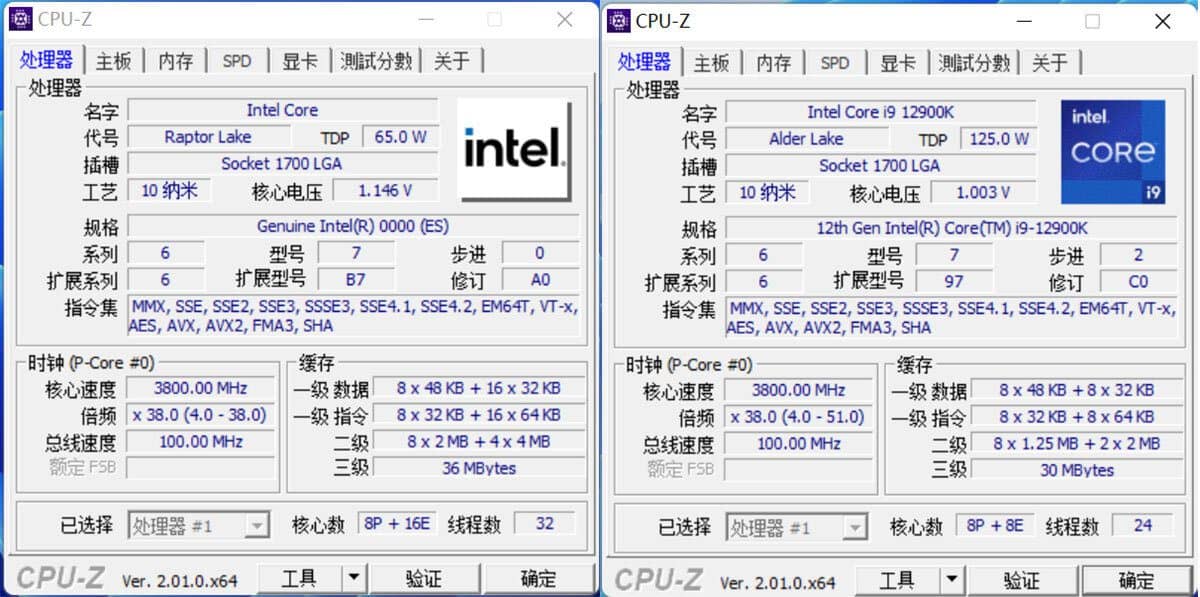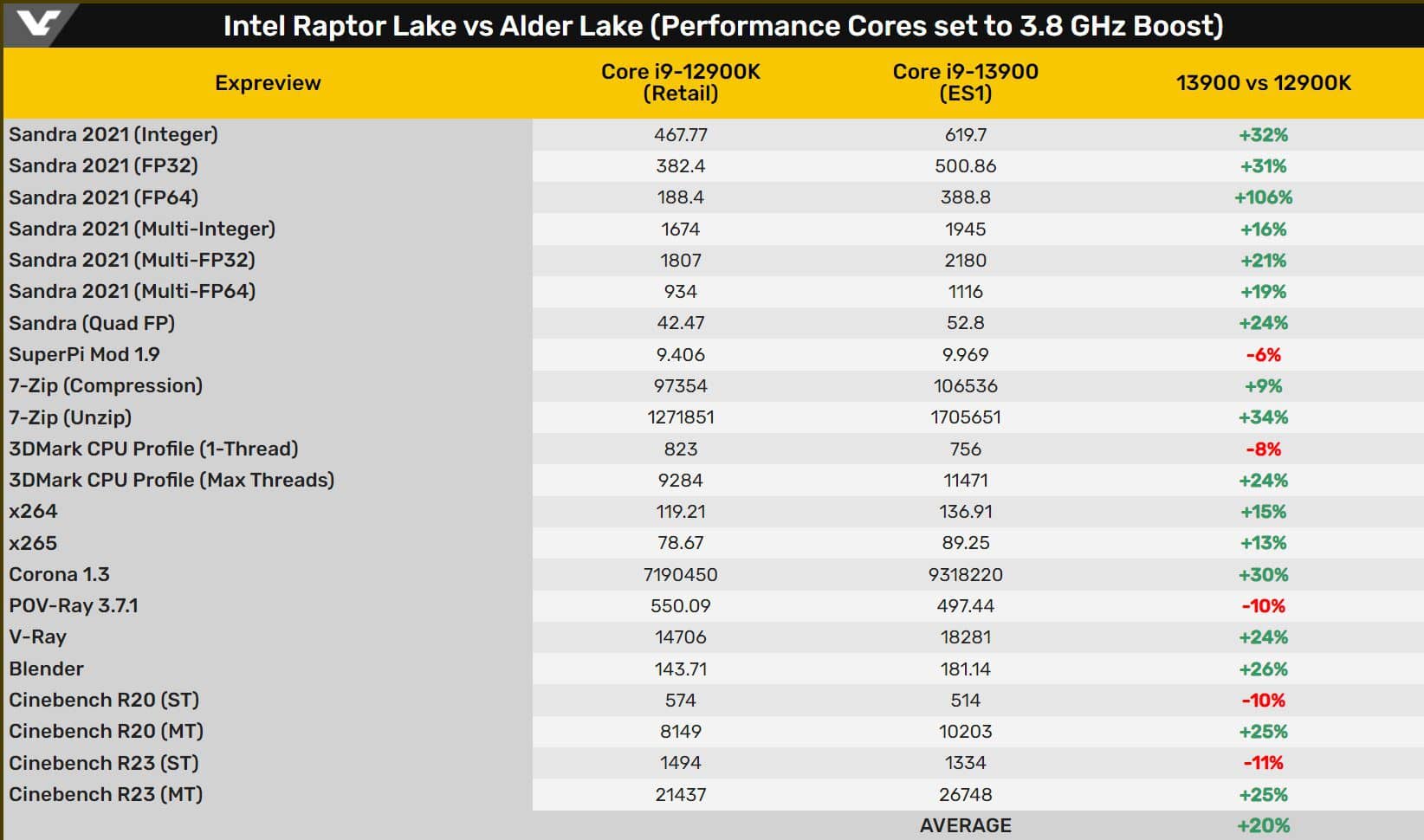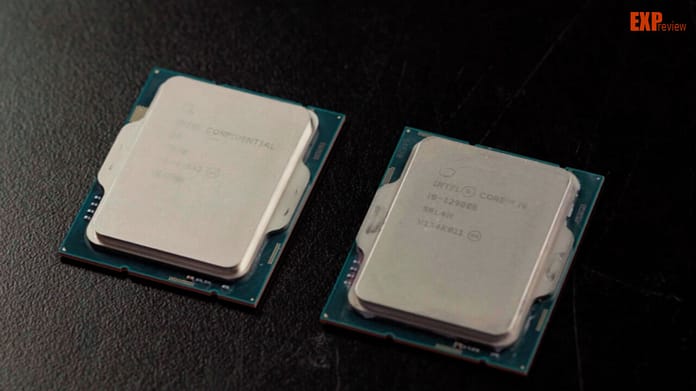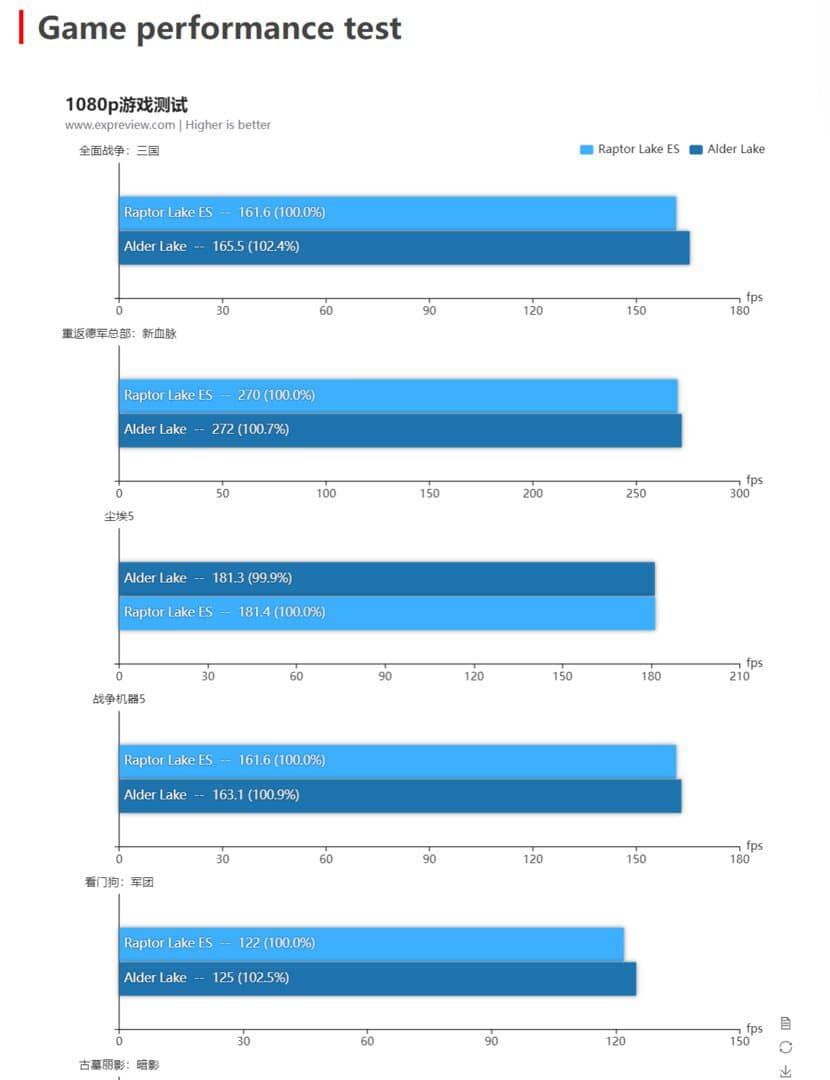It looks like Expreview got its hands on a pre-production Intel Raptor Lake with 24 cores and 32 threads and pitted it against Intel Alder Lake in the same hour. However, the results do not provide a conclusive picture.
The Raptor Lake CPU is rated as a “Core i9-13900” sampler; However, the clock rate of 3.8 GHz for the eight performance cores (P cores) is much lower than expected for the final product. In addition, there is a doubling of efficiency cores (electronic cores) compared to Alder Lake to 16 as well as the well-known plus sign in the L2 cache.

Consistent with the low clock, the sample is given a TDP of 65 W using the CPU-Z tool. The Intel Core i9-12900K processor used in the direct performance comparison, on the other hand, has a TDP of 125W and runs normally up to 5.1GHz. However, to make the comparison fair, the Alder Lake processor clock was limited to 3.8GHz for the Raptor Lake sample.
Lake Raptor in Benchmarks
In the many tests with apps like Sandra 2021, 7-zip, Cinebench, or Blender, at least when using multiple threads, there’s a significant performance increase typically around 20 or 30 percent in favor of a newcomer equipped with more cores. The score, which is twice (+106%) higher on the FP64 multiplex test of the Sandra criteria set, is clearly off the line. There was only 13 percent more performance in the x265 benchmark.
-
Application benchmarks for Raptor Lake ES vs. Alder Lake (both at 3.8GHz) (Photo: Expreview)
Build 1 iPhone 2

However, the single thread benchmarks surprisingly show lower performance with the same watch. Raptor Lake lags 8 percent on the 3DMark CPU test, and by up to 11 percent on the Cinebench R23. However, the confusion is caused by the fact that the colors of the two CPUs are sometimes alternated in the charts. This also applies to those of Video Cards And the WCCFtech Generated overviews are likely to cause errors; At least in the SuperPi standard, there should be a plus instead of a minus.

On average, however, for all of these application parameters, the performance increase is about 20 percent in favor of the Raptor Lake engineering sample. Analyzer makers SiSoft Sandra previously published benchmarks for a similar Raptor Lake sample, which saw the chip perform 33 to 50 percent faster than Alder Lake in our synthetic ALU and FPU tests.
Lake Raptor in games
On the other hand, the Expreview gaming benchmarks seem modest to the sample, similar to the single-thread benchmarks. Most of the time it’s a tie with Alder Lake, but sometimes the newcomer is a few percentage points behind its predecessor.

Since at least the same performance as Alder Lake can be expected with the same clock, or should be slightly higher due to the larger caches, the measurements are surprising.
Results with caution, high expected hour
In the case of pre-series machines with BIOS that may not have been set perfectly yet, the results should be treated with caution anyway.
In the end, it also depends on the clock frequencies of the final CPU models. Here, additional increases are expected around the clock compared to Alder Lake. Even the rumor mill recently speculated about the Turbo watch up to 6 GHzbut there is no conclusive evidence for this.


